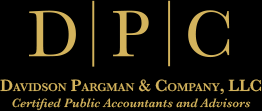
Every workplace has its culture — whether a for-profit business, nonprofit organization, government agency or any other type of employer. For organizations with multiple units or locations, culture can sometimes even differ from team to team or site to site.
What’s important is for employers to keep tabs on culture and use its distinctive aspects to drive productivity while minimizing inherent risks. So, how do you identify your culture? One way is to use the Organizational Culture Assessment Instrument, a tool devised by University of Michigan professors Robert Quinn and Kim Cameron a couple decades ago. It defines four common types of cultures:
1. Clan. These are generally friendly environments where employees feel like family. Clan cultures emphasize teamwork and consensus. Such organizations often have a horizontal structure with few barriers between staff and leaders, who act more as mentors than bosses. As a result, employees tend to be highly engaged and loyal.
For these employers, success is usually defined as effectively serving a relatively small customer base and caring for staff. Clan culture is frequently seen in start-ups and small employers with “legacy” staffs. Some physician practices, private educational institutions and nonprofits can exhibit characteristics of clan culture as well.
2. Adhocracy. Adhocracies are dynamic, entrepreneurial and creative places where employees are encouraged to take risks, and founders are often seen as innovators. These employers are committed to experimentation and encourage individual initiative — with the long-term goal of growing and acquiring new resources.
For adhocracies, success is typically defined by the consistent rollout of new products or services. Think about the many tech companies that strive to anticipate user needs, launch innovative solutions, “disrupt” the norm, and establish new standards of functionality in certain industries or daily life.
3. Market. These cultures are results-driven and competitive, emphasizing the achievement of measurable goals and targets. They value reputation and success in their industry or niche foremost.
Employees are goal-oriented while leaders tend to be hard drivers, producers and rivals simultaneously. Market share and penetration are the hallmarks of success, and competitive pricing and industry domination are important. Professional services organizations — such as CPA, law and consulting firms — tend to have market cultures.
4. Hierarchy. These employers have formal, structured work environments where processes and procedures dictate what employees do. Smooth functioning is critical. Hierarchical organizations strive for stability and efficient execution of tasks, as well as low costs.
Leaders seek to achieve maximum efficiency and consistency in their respective departments. Hierarchies are common in bigger government agencies or branches of the military, manufacturers, banks and insurers.
Of course, there’s no rule that any employer must conform to one of these culture types. In fact, most organizations tend to exhibit a mixture of the four styles, though one of the types is likely dominant.
As mentioned, a good objective for any employer is to regularly assess its culture and determine whether leadership or policy changes are needed to boost productivity or prevent risks such as employment lawsuits or a drop in employee retention. We can assist you in measuring productivity and identifying high employment costs that could be related to your culture or other aspects of your operation.
© 2022
Checkpoint Marketing for Firms
THOMSON REUTERS

